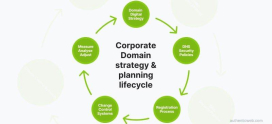
Best Practices for Hosting-Related Content Marketing in E-commerce
In the world of e-commerce, how can you make your brand stand out? With so many businesses vying for attention, crafting a unique identity can seem overwhelming. You might be asking yourself, “How do I create engaging content that not only attracts customers but also retains them?” It’s a valid concern, and you’re not alone in navigating these challenges. Many e-commerce businesses find themselves struggling with content marketing, unsure of the best approaches to connect with their audience.
But fear not! The key lies in effective hosting-related content marketing strategies that can simplify the process and enhance your online presence. Imagine your e-commerce site as a bustling marketplace, and your content—like a friendly vendor—draws customers in with its allure. In this article, we’ll delve into the best practices that will help you harness the power of content marketing in your e-commerce venture. So, if you’re ready to elevate your brand, let’s dive in!
Understanding Your Audience
Before you embark on any content marketing strategy, it’s crucial to understand who you’re talking to. Knowing your audience helps you tailor content to cater to their needs. But how do you figure out what makes them tick?
Building Customer Personas
Creating detailed customer personas can be a game-changer. Think of them as your audience’s profiles, encompassing their demographics, interests, buying behaviors, and pain points. You wouldn’t cook a meal without knowing your guests’ preferences, right? Similarly, understanding your audience helps you serve content that resonates.
Conducting Surveys and Research
Don’t hesitate to reach out to your existing customers. Conduct surveys to gather insights and learn what type of content they find valuable. Tools like Google Forms or SurveyMonkey can facilitate this process. It’s like asking for feedback after a dinner party; most guests will appreciate your effort in wanting to improve.
Creating Valuable Content
Creating valuable content should be at the core of your marketing strategy. This type of content addresses your audience’s needs and pain points while positioning your brand as a credible source.
Focus on Educational Content
Content that educates customers can establish your authority in your industry. Think how-to guides, tutorials, and product demonstrations can inform and assist your audience. Offering knowledge is like providing a roadmap—a way for them to navigate their journey with your products.
Utilize User-Generated Content
User-generated content, such as reviews or testimonials, can act as social proof for your brand. It’s a powerful way to build trust. Just as you’d seek recommendations from friends about a meal or service, potential customers often rely on previous buyers to affirm their choices.
Optimizing for SEO
What good is great content if no one sees it? This is where Search Engine Optimization (SEO) comes into play. By optimizing your content, you improve its discoverability on search engines, driving organic traffic to your site.
Keyword Research
Use tools such as Google Keyword Planner or SEMrush to identify keywords relevant to your audience. Incorporating these keywords naturally within your content increases the chances of your articles ranking high on search engines. Think of keywords as your content’s GPS coordinates—they guide users to your location.
Meta Descriptions and Alt Text
Don’t overlook the importance of meta descriptions and alt text for images. These elements contribute to SEO while helping users understand the context. A well-crafted meta description can be the deciding factor for whether someone clicks on your link in search results.
Leveraging Social Media
Don’t forget that social media is an invaluable platform for sharing your content. It’s where conversations happen, and it’s your chance to engage directly with consumers.
Choosing the Right Platforms
Identify which social media platforms your target audience frequents. You wouldn’t throw a birthday party in a location nobody could access, so don’t waste effort on platforms that might not yield results. Tailor your content for each platform—what works on Instagram might not work on Facebook.
Engagement is Key
Encourage interaction with your posts. Ask questions, use polls, and respond to comments. Just like in a real-life conversation, showing genuine interest goes a long way in building relationships.
Measuring Performance
It’s essential to routinely evaluate how your content is performing. This approach helps you understand what’s working and what isn’t, allowing you to adjust your strategy accordingly.
Utilizing Analytics Tools
Tools like Google Analytics provide insights into your content’s performance. Look for metrics such as page views, bounce rates, and time spent on pages. It’s like checking your reports card; it shows which subjects you excelling in and where you might need extra help.
Adjusting Strategies Based on Data
If certain content performs particularly well, consider creating similar pieces. Conversely, if some content consistently underperforms, reevaluate its title, format, or topic. This iterative process ensures your content remains relevant and engaging.
Ensuring Security and Support
In the e-commerce realm, trust plays a pivotal role in a customer’s decision to purchase. A strong focus on website security and customer support can greatly enhance your content marketing efforts.
The Importance of Website Security
Your e-commerce site should have robust security features. Ensure you’re using HTTPS, SSL certificates, and reliable payment gateways. When customers feel secure, they are more likely to engage and make purchases. Think of security as putting on a seatbelt; it’s a simple yet crucial step towards safety.
Responsive Customer Support
Make sure that your customer support is readily accessible. Whether it’s through chatbots, emails, or social media, prompt responses can build trust and community. Just like a guide on a road trip, good support can alleviate stress and keep customers on track.
Adaptability in Content Format
In today’s digital landscape, users prefer different formats. Engaging your audience through varied content types can enhance their experience on your site.
Incorporating Videos and Infographics
Videos and infographics can simplify complex topics and hold attention better than text alone. It’s akin to offering a sample platter at a restaurant; a little taste can entice customers to try more.
Podcasts and Webinars
Consider hosting podcasts or webinars for deeper engagement. They allow you to explore topics more thoroughly while fostering a strong community. Plus, they offer audiences a more personal connection—like inviting them into your living room for a chat.
Frequently Asked Questions
What is content marketing in e-commerce?
Content marketing in e-commerce involves creating and sharing valuable content to attract, engage, and retain customers. It focuses on nurturing relationships while providing solutions to customers’ needs.
How can I optimize my e-commerce website for SEO?
To optimize your site for SEO, conduct keyword research, ensure your content is high-quality, and utilize meta descriptions and alt tags properly. Focus on creating valuable, user-friendly content.
Why is social media important for e-commerce content marketing?
Social media provides a platform for businesses to engage directly with their audience. It enhances brand visibility, fosters relationships, and can drive traffic to your e-commerce site.
How do I measure the success of my content marketing efforts?
Utilize tools like Google Analytics to track metrics such as traffic, engagement, and conversion rates. Assess what content resonates with your audience and adjust your strategy accordingly.
What types of content are most effective for e-commerce?
Effective content for e-commerce includes blog posts, product reviews, how-to guides, videos, infographics, and user-generated content. Each type serves to educate and engage customers.
How can I incorporate user-generated content into my strategy?
You can encourage user-generated content by running contests, offering incentives for reviews, or featuring customer photos and testimonials on your website and social media. This approach not only builds community but also serves as credible social proof for your brand.
making your e-commerce brand stand out in a crowded marketplace requires a thoughtful and strategic approach to content marketing. By understanding your audience, creating valuable content, optimizing for SEO, leveraging social media, measuring performance, ensuring security, and adapting content formats, you can develop an engaging and effective marketing strategy. With dedication and creativity, your e-commerce business can thrive, drawing in and retaining a loyal customer base. So, roll up your sleeves, start experimenting, and watch your brand flourish!









